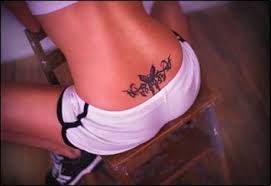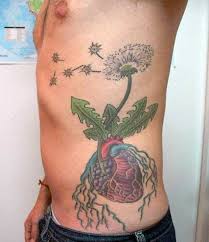 Celtic design tattoos, both because of their ancient historical symbolism and because they are simply among the most beautiful tattoos in the entire tattoo universe, are among the most requested of all tattoo designs. Both men and women of all ages have become intrigued with the aura surrounding Celtic design tattoos, and are hoping some of it will rub off on them.
Celtic design tattoos, both because of their ancient historical symbolism and because they are simply among the most beautiful tattoos in the entire tattoo universe, are among the most requested of all tattoo designs. Both men and women of all ages have become intrigued with the aura surrounding Celtic design tattoos, and are hoping some of it will rub off on them.The inspiration for Celtic design tattoos originated in Great Britain, dating as far back as drawings from the sixth century which appeared in manuscripts of Scripture which was copied in elaborate calligraphy by the Christian monks of the period. The manuscript decoration was extremely ornate, but Celtic design tattoos can be as intricate or as simple as their wearers desire.
The Monks responsible for the Celtic manuscript had the responsibility of combining the pagan imagery of the Celts with their accepted Christian symbols, to aid in the evangelization of the Celtic peoples. The Celtic design tattoos which most clearly illustrate this blending of symbolism is the Celtic cross tattoo, which is a traditional Christian cross with a circle at its center said to represent the ancient Druidic symbol for the sun.
Celtic design tattoos are most often known for their fascinating knots and interlacing, or “plaitwork” which will entertain viewers endlessly as they try to unravel them. The Celtic knot is another Druidic symbol, evoking the unending cycles of life and death, and the perfect and eternal circle.
The universal appeal of Celtic design tattoos, in fact, many lie in their abstract nature. With flowing spirals, squares, and geometrical forms, they are more of an attempt to create an emotion in the viewer rather than to be representational art.
One of the most delightful elements of Celtic design tattoos, in fact, is in their portrayal of animals. The animals in Celtic design tattoos are as complex as the Celtic knots; cats, deer, dogs, lions, tigers, birds and dragons are portrayed when the lines and thread of plaitwork, instead on forming eternal knots and loops, end with the depiction of animal heads, feet and tails. Many of the animals are inspired by medieval depictions of animals, and have a highly appealing air of whimsy.
The shamrock, of course, is one of the oldest Celtic design tattoos; while for the Irish it signifies excellence, and even has religious significance as a sign of the Holy Trinity, it is most widely known as a good luck charm. Those of Irish descent are especially fond of using an Celtic Shamrock tattoo to display their pride in their heritage.
The one drawback to having Celtic deign tattoos done is that they demand a tattoo artist with an exceptional amount of skill. Their symmetrical designs require a precise outline and steady had in the inking process, and some of them can take hours to complete. But done properly, Celtic design tattoos are true works of art!


















